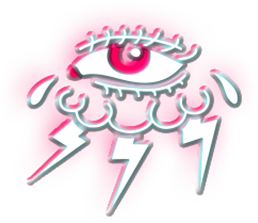
Zombie Ant Fungus “Medicinal potential”
Ophiocordyceps are known in the pharmaceutical world to be a medically-important group. O. unilateralis fungi produce various known secondary metabolites, as well as several structurally uncharacterised substances. These natural products are reportedly being investigated as potential leads in discovery efforts toward immunomodulatory, antitumor, hypoglycemic, and hypocholesterolemic targets.
- Evans HC, Araújo JP, Halfeld VR, Hughes DP (June 2018). “Epitypification and re-description of the zombie-ant fungus, Ophiocordyceps unilateralis (Ophiocordycipitaceae)”. Fungal Systematics and Evolution. 1: 13–22. doi:10.3114/fuse.2018.01.02. PMC 7274273. PMID 32518897.
- Xiao JH, Zhong JJ (2007). “Secondary metabolites from Cordyceps species and their antitumor activity studies”. Recent Patents on Biotechnology. 1 (2): 123–37. doi:10.2174/187220807780809454. PMID 19075836.
In an Ophiocordyceps species within Japanese cicadas, the Ophiocordyceps replaces the symbiotic bacteria within the cicadas to help the host process sap as nutrients, unlike other related species, such as the Ophiocordyceps sinensis, which is a traditional immune booster and cancer treatment in Tibetan and Chinese culture.
- Lu, Jennifer (April 18, 2019). “How a parasitic fungus turns ants into ‘zombies'”. National Geographic. Retrieved December 24, 2022.
Naphthoquinone derivatives
Naphthoquinone derivatives are an example of secondary metabolite with important pharmaceutical potentials produced by O. unilateralis. Six known naphthoquinone derivatives have been isolated from O. unilateralis, namely erythrostominone, deoxyerythrostominone, 4-O-methyl erythrostominone, epierythrostominol, deoxyerythrostominol, and 3,5,8-trihydroxy-6-methoxy-2-(5-oxohexa-1,3-dienyl)-1,4-naphthoquinone, which have shown activity in in vitro assays related to antimalarial drug discovery.
- Kittakoopa P, Punyaa J, Kongsaeree P, Lertwerawat Y, Jintasirikul A, Tanticharoena M, Thebtaranonth Y (1999). “Bioactive naphthoquinones from Cordyceps unilateralis“. Phytochemistry. 52 (3): 453–457. doi:10.1016/S0031-9422(99)00272-1.
- Wongsa P, Tasanatai K, Watts P, Hywel-Jones N (August 2005). “Isolation and in vitro cultivation of the insect pathogenic fungus Cordyceps unilateralis”. Mycological Research. 109 (Pt 8): 936–40. doi:10.1017/S0953756205003321. PMID 16175796.
In addition to having antimalarial activities, all six of these secondary metabolites have been demonstrated to have anticancer and antibacterial activities.
- Amnuaykanjanasin A, Panchanawaporn S, Chutrakul C, Tanticharoen M (August 2011). “Genes differentially expressed under naphthoquinone-producing conditions in the entomopathogenic fungus Ophiocordyceps unilateralis”. Canadian Journal of Microbiology. 57 (8): 680–92. doi:10.1139/W11-043. PMID 21823977.
Moreover, the use of red naphthoquinone pigments produced by O. unilateralis has been studied as a dye for food, cosmetic, and pharmaceutical manufacturing processes.
- Unagul P, Wongsa P, Kittakoop P, Intamas S, Srikitikulchai P, Tanticharoen M (April 2005). “Production of red pigments by the insect pathogenic fungus Cordyceps unilateralis BCC 1869”. Journal of Industrial Microbiology & Biotechnology. 32 (4): 135–40. doi:10.1007/s10295-005-0213-6. PMID 15891934. S2CID 22937549.
In fact, naphthoquinone derivatives produced by the fungus show a red color under acidic conditions, and a purple color under basic conditions. These pigments are stable against acid/alkaline conditions and light and are not cytotoxic, which makes them applicable for food coloring and as a dye for other materials. These attributes also make it a prime candidate for antituberculosis testing in secondary TB patients, by improving symptoms and enhancing immunity when combined with chemotherapeutic drugs.
- Isaka M, Kittakoop P, Kirtikara K, Hywel-Jones NL, Thebtaranonth Y (October 2005). “Bioactive substances from insect pathogenic fungi”. Accounts of Chemical Research. 38 (10): 813–23. doi:10.1021/ar040247r. PMID 16231877.
- Wang Y, Enlai DA, Zhong JI (2013). “A Retrospective Analysis of Cordyceps Anti-Tuberculosis Capsule Combined with Chemotherapy for 614 Cases of Secondary Tuberculosis”. Journal of Traditional Chinese Medicine. 15.
Polyketides
In 2009, a study showed that O. unilateralis also produces polyketides. These secondary metabolites have been used in antibiotics such as patulin, cholesterol medication such as compactin, and antifungal treatments. It has also been reported that polyketides have other therapeutic effects such as antitumor, antioxidant and antiaging activities.
- Amnuaykanjanasin A, Phonghanpot S, Sengpanich N, Cheevadhanarak S, Tanticharoen M (June 2009). “Insect-specific polyketide synthases (PKSs), potential PKS-nonribosomal peptide synthetase hybrids, and novel PKS clades in tropical fungi”. Applied and Environmental Microbiology. 75 (11): 3721–32. Bibcode:2009ApEnM..75.3721A. doi:10.1128/AEM.02744-08. PMC 2687288. PMID 19346345.
From Wikipedia, the free encyclopedia


Leave a Reply